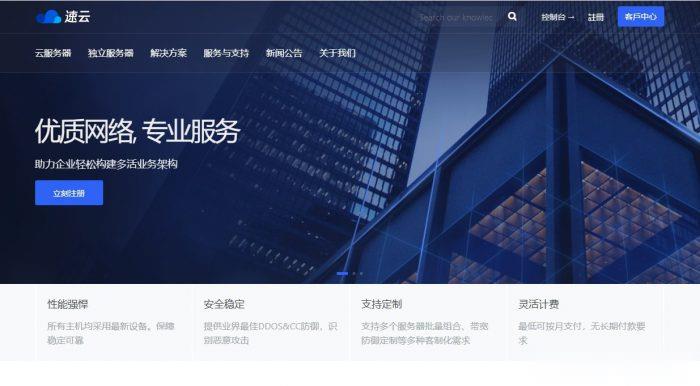experiencedto
magento 时间:2021-02-05 阅读:()
C.
Stephanidis(Ed.
):UniversalAccessinHCI,PartI,HCII2007,LNCS4554,pp.
312–321,2007.
Springer-VerlagBerlinHeidelberg2007DesigningforParticipationinSocio-technicalSoftwareSystemsYunwenYe1,2andGerhardFischer11CenterforLifeLongLearningandDesign,Univ.
ofColorado,Boulder,CO80503,USA2SRAKeyTechnologyLaboratory,3-12Yotsuya,Shinjuku,Tokyo160-0004,Japan{yunwen,gerhard}@colorado.
eduAbstract.
Participativesoftwaresystemsareanewclassofsoftwaresystemswhosedevelopmentdoesnotendatthedeploymentbutrequirescontinueduserparticipationandcontribution.
Theyneedtoprovidebothsolutionstousersandaparticipationframeworkthatentailstechnicalandsocialchallenges.
Meta-designisapromisingapproachtoguidethedevelopmentofparticipativesoftwaresystems.
DrawingonlessonslearnedfromasystematicanalysisofOpenSourceSoftwareprojects,thispaperdescribedgeneralissuesthatneedtobeaddressedtoenableandencouragecontinueduserparticipationduringthemeta-designprocess.
Keywords:meta-design,participativesoftwaresystem,socio-technicalenvironment,systemevolution,communityofpractice,OpenSourceSoftware.
1IntroductionWehavebeenobservingtherapidemergenceofanewtypeofsoftwaresystemsthatarebasedonthecontributionsbyacommunityofusers[18].
Systems,suchasWikipedia,Flickr,andOpenSourceSoftware(OSS)projects,thatarecreatedthroughthecollaborationofmanycontributorswhoareregardedasequalpartnersbybringingtheiruniquesetofskillsandexpertisetoshapethefunctionalityandutilityofthesoftwaresystems.
Wecallsuchsoftwaresystemsasparticipativesoftwaresystems(PSS)whosedesigndoesnotendatthetimeofdeploymentandwhosesuccesshingesoncontinuedparticipationsandcontributionsofusersatusetime.
Participativesoftwaresystemsneedtobeevolvedcontinuouslyatthehandofuserstoachievethebestfitbetweenthesystemanditsever-changingcontextofuse,problems,domains,users,andcommunitiesofusers.
Insuchsystems,therolesofusersanddevelopersareblurredanddesignextendsintousetime.
Thedesignofparticipativesoftwaresystems,therefore,presentsachallengeofcreatingnewmethodologicalframeworksthatre-delineatetherolesofdevelopersandusers,re-distributethedesignactivitiesoverthelifecycleofthesoftwaresystems,andgiveequalimportancetothedesignoftechnicalfunctionalityandthedesignofsocialconditionsforwideandsustainedparticipationofusers.
Meta-design[3]isanewdesignmethodologythatwehaveproposedtoaddresstheabovechallenge.
Meta-designcharacterizesobjectives,techniques,andprocessesforDesigningforParticipationinSocio-technicalSoftwareSystems313creatingnewmediaandenvironmentsthatallow"ownersofproblems"(orusers)toactasdesigners.
Afundamentalobjectiveofmeta-designistocreatesocio-technicalenvironments[7]thatempoweruserstoengageactivelyinthecontinuousdevelopmentofsystemsratherthanbeingrestrictedtotheuseofexistingsystems.
Meta-designaimsatdefiningandcreatingnotonlytechnicalinfrastructuresforthesoftwaresystembutalsosocialinfrastructureinwhichuserscanparticipateactivelyasco-designerstoshapeandreshapethesocio-technicalsystemsthroughcollaboration.
Userparticipation,however,doesnotcomeautomatically.
Specificdesigndecisionshavetobemadeconscientiouslytoenableandencourageuserparticipationandcollaboration.
Thispaperdiscussestheissuesthatneedtobeaddressedduringthemeta-designprocesstoachievesustainableuserparticipation.
AfterthearticulationoftheconceptanddefiningfeaturesofparticipativesoftwaresystemsinSection2,wedescribethelessonsthatwehavelearnedfromasystematicanalysisofOSSsystems.
Drawingfromthelessons,wepresentageneralframeworkofdesigningforparticipationinSection4,followedbyasummaryinSection5.
2ParticipativeSoftwareSystemsSoftwaresystemsareknowledgeartifactswhosecreationrequiresawiderangeofknowledgefromcomputationdomainsandproblemdomains.
Systemsthatrequirerelativelylittledomainknowledgeorindomainswhererequirementscanbeclearlyarticulatedupfrontcanbedelegatedtoprofessionaldevelopersaftertheusershaveclearlyidentifiedtherequirements.
Whentherequirementscanbeonlypartiallyunderstoodordefinedprevioustotheconstructionofthesystem,professionalsoftwaredevelopersneedtoworkinclosecollaborationwithdomainexperts(asystemdesignmethodologypursuedinparticipatorydesignapproaches[15]).
Mostcomplexproblemsareill-definedproblemsthatcannotbedelegatedbecausetheyrequiretheintegrationofproblemframingandproblemsolving[13],makingitimpossibletodefinerequirementsinadvance.
Ill-definedproblemsrequirethat"back-talk"ofaproblemgoestotheownersoftheproblemhelpingthemiterativelytogainadeeperunderstandingoftheproblem[14]duringtheprocessofconstructingthesolution.
Continueduserparticipationandinvolvementinthedesignanddevelopmentofsoftwaresystemisneeded.
Weusethetermparticipativesoftwaresystem(PSS)[11]torefertothiskindofsoftwaresystems.
ThedevelopmentofPSSdoesnotendatthetimeofdeploymentbutextendsintouse.
PSSisalivingentityandasocio-technicalsystem[7]capableofintegratingcomputinginfrastructureandparticipationprocessinonesingleplatformandsupportingcollaborationnotonlyaboutdesignartifactsbutalsoaboutthegoalsofthedesignactivity.
InaPSS:1.
userscanparticipateintheevolutionofthesystemaccordingtotheircapabilitiesandonthebasisontheirowninterestorneeds;2.
userparticipation(atvariouslevels)notonlybenefitstheuser,butitalsoshapestheplatformforotherparticipantstocollaborate;and3.
asaresultofparticipation,usersandthesoftwaresystemco-evolvetoadaptthewholePSStonewsocialandtechnicaldemands.
314Y.
YeandG.
Fischer2.
1Re-definingtheRolesofUsersandDevelopersIntheworldofsoftware,usersanddevelopersareconventionallyregardedastwomutuallyexclusivegroupsofpeople.
Usersarethosepeoplewhoownaproblem,anddevelopersarethosewhoconstructsoftwaresystemsfortheusers.
However,withthewidespreaduseof,andthesociety'sincreasingrelianceon,software,thedistinctionbetweenusersanddevelopersisquicklydisappearing.
Moreandmorepeoplearenotonlyusingsoftwarebutalsogettinginvolvedindevelopingsoftwaretowidelyvaryingdegrees(Fig.
1)tosolveproblems.
Fig.
1.
Thespectrumofsoftware-relatedactivitiesTomakesoftwaredevelopmenteasier,twomajorresearchfieldshavebeenestablishedtoattackbothendsoftheabovespectrum(Fig.
1).
Softwareengineeringfocusesonthegroupofpeopleontheright,whocallsoftwaredevelopmenttheirprofession.
Theydevelopsoftwaresystemsthatareusedbyusersotherthanthemselves.
End-userdevelopment[6,8]aimstofindwaysofcreatingsoftwaresystemsthatcanbeadaptedbyend-userstotheirownuniqueneeds.
Itfocusesonthegroupofpeopleontheleftoftheabovespectrum.
Inthemiddlearepeoplewhohavecertainsoftwaredevelopmentskillsbutarenotinterestedinsoftwareperse.
Theydonotdevelopsoftwareforotherpeople;rathertheyaredevelopingsoftwaretosolvespecificproblemsthattheyown.
Thisgroupofpeoplecanbecalleddomainexpertsoftwaredevelopers(ordomainexperts)[1].
2.
2RedistributingtheDesignActivityInalldesignprocesses,twobasicstagescanbedifferentiated:designtimeandusetime[4].
Atdesigntime,systemdevelopers(withorwithoutuserparticipation)createenvironmentsandtoolsfortheworldasimaginedbythemtoanticipateusers'needsandobjectives.
Atusetime,usersusethesystemintheworldasexperienced.
Thebridgingofthesetwostagesintoaunique"design-in-use"continuumencompassinganongoingconversationbothwiththedesignmaterialandamongparticipantsdifferentiatesmeta-designfromother(moreestablished)designframeworks.
Existingdesignframeworksarebasedontheassumptionthatmajordesignactivitiesendatacertainpointafterwhichthesystementersusetime.
Meta-designcomplementsandtranscendsthesedesignmethodologiesbycreatingopenandcontinuouslyevolvablesystemsthatcanbecollaborativelyextendedandredesignedatusetimebyusersandusercommunities.
However,meta-designisnotmerelyend-usermodificationandprogramming.
Meta-designedsoftwaresystemsnotonlyprovidethetechnicalmeansforuserstocustomizeandextendthesystemsbutalsoDesigningforParticipationinSocio-technicalSoftwareSystems315providesocialandtechnicalmechanismstofacilitateuserparticipationandcollaborationduringthedesignactivities.
3DesigningforParticipation:LessonsfromOpenSourceSoftwareDevelopmentTounderstandhowuserparticipationcanbesustainedinPSS,westudiedsuccessfulexamplesofatypicalclassofPSS:OpenSourceSoftware(OSS)systems.
OSSdevelopmentisanactivityinwhichacommunityofsoftwaredeveloperscollaborativelyconstructssystemstohelpsolveproblemsofsharedinterestandformutualbenefit.
TheoriginaldesignersofanOSSsystemdonotprovideacompletesolutionthataddressesallproblemsofpotentialusers,ratherheorsheprovidesan"under-designedseed"asasolutionspacethatcanbeevolvedbyitsusersatusetimeviamakingthesourcecodeavailable[2,12].
Theabilitytochangesourcecode,thetechnologicalmeansofsharingchangesovertheInternet,andthespontaneoussocialsupportamongcommunitymembersaretheenablingconditionsforcollaborativeconstructionofsoftwarebychangingsoftwarefromafixedentitythatisproducedandcontrolledbyaclosedgroupofdesignerstoanopeneffortthatallowsacommunitytodesigncollaboratively.
However,notallOSSsystemsaresuccessfulintermsofactiveuserparticipation.
Astudy[10]of90,902OpenSourceSoftwareprojectshostedinthesourceforge.
nethasfoundthat66.
7%oftheprojectshaveonlyonedeveloper.
Tounderstandthesocio-technicalfactorsthatmakesomeOSSdevelopmentsuccessfulPSS,wehaveconductedstudiesoffiveOSSprojects:GNU,Linux,PostgreSQL,JunandGIMP[21,22].
OnecriticalfactorthatenablesthecontinualevolutionofanOSSprojectistheformingofavibrantandsustainedcommunityofpractice[20]ofdevelopers,users,anduser-turned-developers.
TherighttoaccessandmodifysourcecodeitselfdoesnotmakeOSSprojectsdifferentfrommost"ClosedSourceSoftware"ones.
Alldevelopersinaprojectinanysoftwarecompanywouldhavethesameaccessprivilege.
Thefundamentaldifferenceistheroletransformationofthepeopleinvolvedinaproject.
InClosedSourceSoftwareprojects,developersandusersareclearlydefinedandstrictlyseparated.
InOSSprojects,thereisnocleardistinctionbetweendevelopersandusers:allusersarepotentialdevelopers.
3.
1RolesandCommunityStructureinOSSCommunitiesPeopleinvolvedinaparticularOSSprojectcreateacommunityaroundtheproject.
MembersofanOSScommunityassumerolesaccordingtotheirpersonalinterestintheproject,ratherthanbeingassignedbysomeoneelse.
Amembermayhaveoneofthefollowingeightroles[9]:ProjectLeader.
ProjectLeadersareoftenthepersonwhohasinitiatedtheproject.
Theyareresponsibleforthevisionandoveralldirectionoftheproject.
CoreMember.
CoreMembersareresponsibleforguidingandcoordinatingthedevelopmentofanOSSproject.
CoreMembersarethosepeoplewhohavebeeninvolvedwiththeprojectforarelativelongtimeandhavemadesignificantcontributionstothedevelopmentandevolutionofthesystem.
316Y.
YeandG.
FischerActiveDeveloper.
ActiveDevelopersregularlycontributenewfeaturesandfixbugs;theyareoneofthemajordevelopmentforcesofOSSsystems.
PeripheralDeveloper.
PeripheralDevelopersoccasionallycontributenewfunctionalityorfeaturestotheexistingsystem.
Theircontributionisirregular,andtheperiodofinvolvementisshortandsporadic.
BugFixer.
BugFixersfixbugsthateithertheydiscoverbythemselvesorarereportedbyothermembers.
BugFixershavetoreadandunderstandasmallportionofthesourcecodeofthesystemwherethebugoccurs.
BugReporter.
BugReportersdiscoverandreportbugs;theydonotfixthebugsthemselves,andtheymaynotreadsourcecodeeither.
Theyassumethesameroleastestersinthetraditionalsoftwaredevelopmentmodel.
Reader.
Readersareactiveusersofthesystem;theynotonlyusethesystem,butalsotrytounderstandhowthesystemworksbyreadingthesourcecode.
PassiveUser.
PassiveUsersjustusethesysteminthesamewayasmostofususecommerciallyavailableClosedSourceSoftware.
TheyareattractedtoOSSmainlyduetoitshighqualityandthepotentialtobechangedwhenneeded.
ProjectLeaderCoreMembersPeripheralDevelopersBugFixersBugReportersReadersPassiveUsersActiveDevelopersProjectLeaderCoreMembersPeripheralDevelopersBugFixersBugReportersReadersPassiveUsersActiveDevelopersFig.
2.
GeneralstructureofanOSScommunityAlthoughastricthierarchicalstructuredoesnotexistinOSScommunities,thestructureofOSScommunitiesisnotcompletelyflat.
Theinfluencesthatmembershaveonthesystemandthecommunityaredifferent,dependingontherolestheyplay.
Fig.
2depictsthegenerallayeredstructureofOSScommunities,inwhichrolesclosertothecenterhavealargerradiusofinfluence.
PassiveUsershavetheleastinfluence,buttheystillplayimportantrolesinthewholecommunity.
Althoughtheydonotdirectlycontributetothedevelopmentofthesystemtechnically,theirexistencecontributessociallyandpsychologicallybyattractingandmotivatingother,moreactive,members,towhomalargepopulationofusersistheutmostrewardandflatteryoftheirhardwork[12].
DesigningforParticipationinSocio-technicalSoftwareSystems3173.
2Co-evolutionofOSSSystemsandOSSCommunitiesTherolesandtheirassociatedinfluencesinOSScommunitiescanberealizedonlythroughcontributionstothecommunity.
Rolesarenotfixed:memberscanplaylargerrolesiftheyaspireandmakeappropriatecontributions.
AsmemberschangetherolestheyplayinanOSScommunity,theyalsochangethesocialdynamics,andthusreshapethestructureofthecommunity,resultingintheevolutionofthecommunity.
ForanOSSprojecttohaveasustainabledevelopment,thesystemandthecommunitymustco-evolve.
AlargebaseofvoluntarilycontributingmembersisoneofthemostimportantsuccessfactorsofOSS.
TheevolutionofanOSScommunityiseffectedbythecontributionsmadebyitsaspiringandmotivatedmembers.
Suchcontributionsnotonlytransformtheroleandinfluenceoftheircontributorsinthecommunityandthusevolvethewholecommunity,buttheyarethesourcesoftheevolutionofthesystem.
Theoppositeisalsotrue;anymodification,improvement,andextensionmadetoanOSSsystemnotonlyevolvesthesystembutredefinestheroleofthecontributingmembersandthuschangesthesocialdynamicsoftheOSScommunity(Fig.
3).
TherolethatanOSSmemberplaysinthecommunityisnotpre-assigned,andisassumedbythememberasheorsheinteractswithothermembers.
AnaspiringmembercanbecomeaCoreMemberthroughthefollowingmigrationpath:NewmembersareattractedtoanOSScommunitybecausethesystemcansolveoneoftheirownproblems.
ThedepthandrichnessofgoodOSSsystemsoftendrivesmotivatedmemberstowanttolearnmore,toreadthesystem[16].
ThenewmembersnowmigratefromPassiveUserstoReaders.
Astheygainmoreunderstandingofthesystem,theyareabletofixthebugsthatareeitherencounteredbythemselvesorreportedbyothers.
Theymayalsowanttoaddanewtwisttothesystemtomakethesystemmorepowerfulandmoresuitablefortheirowntasks.
Astheirdevelopedprogramsaremadepubliclyavailabletoothercommunitymembers,theirrolesasBugFixersandPeripheralDevelopersarerecognizedandestablishedinthewholecommunity.
Themorecontributionstheymake,thehigherrecognitiontheyearn,andfinally,theywillenterthehighlyselected"innercircle"ofCoreMembers.
RolechangesthroughcontributionsSystemevolutionCommunityevolutionMutualdependenceRolechangesthroughcontributionsSystemevolutionCommunityevolutionMutualdependenceFig.
3.
Theco-evolutionofOSSsystemsandOSScommunities318Y.
YeandG.
FischerTheabovepathdescribesanabstractmodelofrolechangesofaspiringmembers.
NotallmemberswanttoandwillbecomeCoreMembers.
SomewillremainPassiveUsers,andsomestopsomewhereinthemiddle.
TheimportantpointisthatOpenSourceSoftwaremakesitpossibleforanaspiringandtechnicallycapablesoftwaredevelopertoplayalargerrolethroughcontinualcontributionsandengagement4DesigningforParticipation:AGeneralFrameworkDrawingfromthelessonslearnedbysystematicanalysisofOSSprojectsfromthemeta-designperspective,thissectiondescribeschallengingissuesthatneedtobeconsideredduringthemeta-designprocessofPSStoenableandencouragecontinueduserparticipation.
4.
1EmbracingUsersasCo-designersToembraceusersasco-designers,designersofPSSneedtobearinmindthattheyarenotonlyprovidingasolutiontousers,butalsoasolutionspace[18]withinwhichuserscandevelopnewsolutionstotheirspecificneeds.
Thesolutionspacecontainstechnologicalinstrumentsthatuserscanusefortheirdesignactivities,anddeterminesthedegreethatuserscanevolvetheoriginaldesign.
Currentlyavailabletechnologyinsoftwaresystemsprovidesavarietyofchoices,rangingfromthemodificationofoptions,thecustomizationofmenusandfunctions,theplug-instructureforextension,thepublishedservicesforbeingmashedupwithotherservices,thepublicationofsystemAPIforintegrationwithothersystems,andthesourcecodethatoffersthehighestfreedomforuserdevelopment.
Meta-designersofPSShavetomakeaconscientiousdecisionaccordingtohowmuchtheywanttogetuserinvolved.
4.
2ProvidingaCommonPlatformDesigncontributionsmadebyoneindividualuserarelimitedbecauseoneparticularuserisonlyinterestedincreatingsolutionsforhisorherownneeds.
Thepowerofdistributeduserdesigncomesfromthefactthattheevolutionofsystemsispushedbyalargenumberofuserswithdiversifiedneedsandskillswhoeachmakessmallcontributions.
Forthistohappen,usersneedtohaveacommonplatformsothattheycansharewitheachotherandintegratedesignsolutionsofothers.
Meta-designersneedtoeithercreateanassociatedcommontoolkitorutilizeasetofcommontoolswidelyavailabletoalluserstofacilitateeasysharingandintegration.
TheconceptofOSShasbeenpioneeredbyRichardStallman(withthetermFreeSoftware)inthe80sbutthehugesuccessofOSSsystemsbecomespossibleonlywhensoftwaredevelopmenttools—suchasEmacs,Eclipse,andCVS—becomeswidelyavailableandthedefactostandardtoolsformostsoftwaredevelopers.
4.
3EnablingLegitimatePeripheralParticipationAtransparentpolicyandprocedureisneededtoincorporatesomeofusercontributionsintotheparticipativesoftwaresystems.
Userswhomadecontributionsneedtoseethattheircontributionsmakearecognizableinfluenceonthesystem.
InDesigningforParticipationinSocio-technicalSoftwareSystems319otherwords,userparticipationhastobelegitimate[20]andtheirdesignactivitiesareregardedasanintegralpartofshapingthedirectionandfunctionalityofthesystem.
Thepossibilityfornewcomerstoparticipateperipherallyisanotherkeyaspect[19].
Toattractmoreuserstobecomedevelopers,thesystemarchitecturemustbedesignedinamodularizedwaytocreatemanyrelativelyindependenttaskswithprogressivedifficultysothatnewcomerscanstarttoparticipateperipherallyandmoveongraduallytotakechargeofmoredifficulttasks.
Thewayasystemispartitionedhasconsequencesforboththeefficiencyofparalleldevelopment—aprerequisiteforOSS—andthepossibilityofperipheralparticipation.
ThesuccessofLinuxisdueinlargeparttoitswell-designedmodularity[17].
Anotherapproachtoaffordperipheralparticipationisperhapstointentionallyreleaseunder-designedsystemtousersbyleavingsomenon-criticalpartsunimplementedtofacilitateeasyparticipation.
TheTODOlistofmostOSSsystemscreatesguidanceforparticipation.
4.
4SharingControlWhiletheoriginalmeta-designersofthePSSmayretainthemajorcontrolofthedirectionofthesystem,activeparticipatingusersneedtobegrantedcertaincontrolscommensuratewiththeirinterest,technicalskill,andcontributions.
Therolesthatadomainexpertusercanplayinthesystemaredifferentdependingontheirlevelsofinvolvement.
Eachlevelhasitsownresponsibilityandauthority.
Responsibilitywithoutauthoritycannotsustainusers'interestinfurtherinvolvement.
WhenuserschangetheirrolesinthePSSbymakingconstantcontributions,theyshouldbegrantedthematchingauthorityinthedecision-makingprocessthatshapesthesystem.
Themeta-designerneedstofindastrategicwaytotransfersomeofthecontroltoaspiringandcontributingusers.
Grantingthoseuserscontrollingauthorityhastwopositiveimpactsonsustaininguserparticipation:(1)userswhogaincontrollingauthoritybecomestakeholdersandrequireownershipinthesystemandarelikelytomakefurthercontributions;and(2)itcanattractandencouragenewuserswhowanttoinfluencethesystemdevelopmenttomakecontributions.
SuccessfulOSSprojectsinvariablyselectskilfuluser-turned-developersandgrantthemaccessprivilegetocontributingdirectlytothesourcebase.
4.
5PromotingMutualLearningandSupportUsershavedifferentlevelsofskillandknowledgeaboutthesystem.
Togetinvolvedincontributingtothesystemorusingthesystem,theyneedtolearnmanythings.
Peerusersareimportantlearningresources.
APSSshouldbeaccompaniedwithknowledgesharingmechanismsthatencourageuserstolearnfromeachother.
InOSSprojects,mailinglists,discussionforums,andchatroomsprovideanimportantplatformforknowledgetransferandexchangeamongpeerusers[5].
4.
6FosteringaSocialRewardingandRecognitionStructureMotivationtoparticipationisessentialforthesuccessofPSSs.
Factorsthataffectmotivationarebothintrinsicandextrinsic.
Thepreconditionformotivatinguserstogetinvolvedincontributionisthattheymustderiveanintrinsicsatisfactionintheir320Y.
YeandG.
Fischerinvolvementbyshapingthesoftwaresystemtosolvetheirproblems.
Intrinsicmotivationispositivelyreinforcedandamplifiedwhensocialstructureandconventionsofthecommunityrecognizeandrewardthecontributionsofitsmembers.
ThesocialfabricinherentinOSScommunitiesreinforcestheintrinsicmotivationforparticipatinginOSSprojects.
Membersclosetothecenterofthecommunityenjoybettervisibilityandreputationsthandoperipheralmembers.
Asnewmemberscontributetothesystemandthecommunity,theyarerewardedwithhigherrecognition,trust,andinfluenceinthecommunity.
Rewardingcontributingmemberswithhigherrecognitionandmoreimportantrolesisalsoimportantforthesustainabilityofthecommunityandthesystemdevelopment,becauseitisthewaythatthecommunityreproducesitself.
DevelopersofPSSsthereforeneedtoestablishasocialnormintheusercommunitiesbyrecognizingpubliclycontributingusersandpromotingthesocialstatusinthecommunitybygrantingmatchingauthority.
5SummaryPSSsrepresenttherapidlyemergingclassofsoftwaresystemswhosedevelopmentdoesnotendatthepointofdeploymentandcontinuestoevolveatthehandofparticipatingusers.
Thesuccessofmanysuchsystemsismostlyaccidentalresultingfromtheinsightsoftheiroriginaldesigners.
ExistingsoftwaredesignmethodologiesthathavemainlyfocusedonengineeringsoftwaresystemstotheneedsofusersatdesigntimearenotwellsuitedforPSSs.
Forthepastseveralyears,wehavedevelopedthemeta-designframeworktoaddressthischallenge.
Inthispaper,wedescribedgeneralissuesthatneedtobeconsideredtodesignsocio-technicalenvironmentsthatenableandencourageuserparticipation,drawingonasystematicstudyofexistingOSSprojects.
Acknowledgements.
TheauthorswouldliketothankKumiyoNakakoji,YasuhiroYamamoto,andthemembersoftheCenterforLifeLongLearning&DesignattheUniversityofColorado,whohavemademajorcontributionstotheresearchdescribedinthispaper.
Theresearchwassupported(1)bytheNationalScienceFoundation,Grants(a)IIS-0613638"SoD-Team:AMeta-DesignFrameworkforParticipativeSoftwareSystems",and(2)bySRAKeyTechnologyLaboratory,Inc.
,Tokyo,Japan.
References1.
Costabile,M.
F.
,Fogli,D.
,Fresta,G.
,Mussio,P.
,Piccinno,A.
:BuildingEnvironmentsforEnd-UserDevelopmentandTailoring.
In:Proc.
of2003IEEEHCC'03,Auckland,NewZealandpp.
31–38(2003)2.
DiBona,C.
,Ockman,S.
,Stone,M.
(eds.
):OpenSources:VoicesfromtheOpenSourceRevolution.
O'ReillyandAssociates,Sebastopol,CA(1999)3.
Fischer,G.
,Giaccardi,E.
:Meta-Design:AFrameworkfortheFutureofEndUserDevelopment.
In:Lieberman,H.
,Paternò,F.
,Wulf,V.
(eds.
)EndUserDevelopment:EmpoweringPeopletoFlexiblyEmployAdvancedInformationandCommunicationTechnology,TheNetherlands,pp.
427–457.
KluwerAcademicPublishers,Dordrecht(2006)DesigningforParticipationinSocio-technicalSoftwareSystems3214.
Henderson,A.
,Kyng,M.
:There'sNoPlaceLikeHome:ContinuingDesigninUse.
In:Greenbaum,J.
,Kyng,M.
(eds.
)DesignatWork:CooperativeDesignofComputerSystems,pp.
219–240.
LawrenceErlbaum,Mahwah(1991)5.
Lakhani,K.
R.
,vonHippel,E.
:HowOpenSourceSoftwareWorks:FreeUsertoUserAssistance.
ResearchPolicy32,923–943(2003)6.
Lieberman,H.
,Paternò,F.
,Wulf,V.
:EndUserDevelopment-EmpoweringPeopletoFelxiblyEmployAdvancedInformationandCommunicationTechnology,TheNetherlands.
KluwerPublishers,Dordrecht(2006)7.
Mumford,E.
:Socio-TechnicalSystemDesign:EvolvingTheoryandPractice.
In:Bjerknes,P.
G.
,Ehn,P.
,Kyng,M.
(eds.
):ComputersandDemocracy.
Averbury,Aldershot,UK,pp.
59–76(1987)8.
Myers,B.
A.
,Ko,A.
J.
,Burnett,M.
M.
:InvitedResearchOverview:End-UserProgramming.
ProceedingsofHumanFactorsinComputingSystems(CHI2006),Montreal,pp.
75–80(2006)9.
Nakakoji,K.
,Yamamoto,Y.
,Nishinaka,Y.
,Kishida,K.
,Ye,Y.
:EvolutionPatternsofOpen-SourceSoftwareSystemsandCommunities.
In:ProceedingsofInternationalWorkshoponPrinciplesofSoftwareEvolution(IWPSE2002)Orlando,FL,pp.
76–85(2002)10.
Ohira,M.
,Ohsugi,N.
,Ohoka,T.
,Matsumoto,K.
-i.
:AcceleratingCross-ProjectKnowledgeCollaborationUsingCollaborativeFilteringandSocialNetworks.
In:ProceedingsofInternationalWorkshoponMiningSoftwareRepositories,St.
Louis,MO,pp.
111–115(2005)11.
Pangaro,P.
:ParticipativeSystems(2000)12.
Raymond,E.
S.
:TheCathedralandtheBazaar:MusingsonLinuxandOpenSourcebyanAccidentalRevolutionary.
O'Reilly,Sebastopol,CA(2001)13.
Rittel,H.
:Second-GenerationDesignMethods.
In:Cross,N.
(ed.
)DevelopmentsinDesignMethodology,pp.
317–327.
JohnWiley&Sons,NewYork(1984)14.
Schn,D.
A.
:TheReflectivePractitioner:HowProfessionalsThinkinAction.
BasicBooks,NewYork(1983)15.
Schuler,D.
,Namioka,A.
(eds.
):ParticipatoryDesign:PrinciplesandPractices.
LawrenceErlbaumAssociates,Mahwah(1993)16.
Tiemann,M.
:FutureofCygnusSolutions.
In:DiBona,C.
,Ockman,S.
,Stone,M.
(eds.
):OpenSources:VoicesfromtheOpenSourceRevolution.
O'Reilly,Sebastopol,pp.
71–89(1999)17.
Torvalds,L.
:TheLinuxEdge.
CommunicationsofACM42,38–39(1999)18.
vonHippel,E.
:DemocratizingInnovation.
MITPress,Cambridge(2005)19.
vonKrogh,G.
,Spaeth,S.
,Lakhani,K.
R.
:Community,Joining,andSpecializationinOpenSourceSoftwareInnovation:ACaseStudy.
ResearchPolicy32,1217–1241(2003)20.
Wenger,E.
:CommunitiesofPractice—Learning,Meaning,andIdentity,England.
CambridgeUniversityPress,Cambridge(1998)21.
Ye,Y.
,Kishida,K.
:TowardanUnderstandingoftheMotivationofOpenSourceSoftwareDevelopers.
In:Proceedingsof,InternationalConferenceonSoftwareEngineering(ICSE'03),Portland,OR(2003),pp.
419–429(2003)22.
Ye,Y.
,Nakakoji,K.
,Yamamoto,Y.
,Kishida,K.
:TheCo-EvolutionofSystemandCommunityinOpenSourceSoftwareDevelopment.
In:Koch,S.
(ed.
)Free/OpenSourceSoftwareDevelopment.
IdeaGroupPublishing,pp.
59–82(2004)
Stephanidis(Ed.
):UniversalAccessinHCI,PartI,HCII2007,LNCS4554,pp.
312–321,2007.
Springer-VerlagBerlinHeidelberg2007DesigningforParticipationinSocio-technicalSoftwareSystemsYunwenYe1,2andGerhardFischer11CenterforLifeLongLearningandDesign,Univ.
ofColorado,Boulder,CO80503,USA2SRAKeyTechnologyLaboratory,3-12Yotsuya,Shinjuku,Tokyo160-0004,Japan{yunwen,gerhard}@colorado.
eduAbstract.
Participativesoftwaresystemsareanewclassofsoftwaresystemswhosedevelopmentdoesnotendatthedeploymentbutrequirescontinueduserparticipationandcontribution.
Theyneedtoprovidebothsolutionstousersandaparticipationframeworkthatentailstechnicalandsocialchallenges.
Meta-designisapromisingapproachtoguidethedevelopmentofparticipativesoftwaresystems.
DrawingonlessonslearnedfromasystematicanalysisofOpenSourceSoftwareprojects,thispaperdescribedgeneralissuesthatneedtobeaddressedtoenableandencouragecontinueduserparticipationduringthemeta-designprocess.
Keywords:meta-design,participativesoftwaresystem,socio-technicalenvironment,systemevolution,communityofpractice,OpenSourceSoftware.
1IntroductionWehavebeenobservingtherapidemergenceofanewtypeofsoftwaresystemsthatarebasedonthecontributionsbyacommunityofusers[18].
Systems,suchasWikipedia,Flickr,andOpenSourceSoftware(OSS)projects,thatarecreatedthroughthecollaborationofmanycontributorswhoareregardedasequalpartnersbybringingtheiruniquesetofskillsandexpertisetoshapethefunctionalityandutilityofthesoftwaresystems.
Wecallsuchsoftwaresystemsasparticipativesoftwaresystems(PSS)whosedesigndoesnotendatthetimeofdeploymentandwhosesuccesshingesoncontinuedparticipationsandcontributionsofusersatusetime.
Participativesoftwaresystemsneedtobeevolvedcontinuouslyatthehandofuserstoachievethebestfitbetweenthesystemanditsever-changingcontextofuse,problems,domains,users,andcommunitiesofusers.
Insuchsystems,therolesofusersanddevelopersareblurredanddesignextendsintousetime.
Thedesignofparticipativesoftwaresystems,therefore,presentsachallengeofcreatingnewmethodologicalframeworksthatre-delineatetherolesofdevelopersandusers,re-distributethedesignactivitiesoverthelifecycleofthesoftwaresystems,andgiveequalimportancetothedesignoftechnicalfunctionalityandthedesignofsocialconditionsforwideandsustainedparticipationofusers.
Meta-design[3]isanewdesignmethodologythatwehaveproposedtoaddresstheabovechallenge.
Meta-designcharacterizesobjectives,techniques,andprocessesforDesigningforParticipationinSocio-technicalSoftwareSystems313creatingnewmediaandenvironmentsthatallow"ownersofproblems"(orusers)toactasdesigners.
Afundamentalobjectiveofmeta-designistocreatesocio-technicalenvironments[7]thatempoweruserstoengageactivelyinthecontinuousdevelopmentofsystemsratherthanbeingrestrictedtotheuseofexistingsystems.
Meta-designaimsatdefiningandcreatingnotonlytechnicalinfrastructuresforthesoftwaresystembutalsosocialinfrastructureinwhichuserscanparticipateactivelyasco-designerstoshapeandreshapethesocio-technicalsystemsthroughcollaboration.
Userparticipation,however,doesnotcomeautomatically.
Specificdesigndecisionshavetobemadeconscientiouslytoenableandencourageuserparticipationandcollaboration.
Thispaperdiscussestheissuesthatneedtobeaddressedduringthemeta-designprocesstoachievesustainableuserparticipation.
AfterthearticulationoftheconceptanddefiningfeaturesofparticipativesoftwaresystemsinSection2,wedescribethelessonsthatwehavelearnedfromasystematicanalysisofOSSsystems.
Drawingfromthelessons,wepresentageneralframeworkofdesigningforparticipationinSection4,followedbyasummaryinSection5.
2ParticipativeSoftwareSystemsSoftwaresystemsareknowledgeartifactswhosecreationrequiresawiderangeofknowledgefromcomputationdomainsandproblemdomains.
Systemsthatrequirerelativelylittledomainknowledgeorindomainswhererequirementscanbeclearlyarticulatedupfrontcanbedelegatedtoprofessionaldevelopersaftertheusershaveclearlyidentifiedtherequirements.
Whentherequirementscanbeonlypartiallyunderstoodordefinedprevioustotheconstructionofthesystem,professionalsoftwaredevelopersneedtoworkinclosecollaborationwithdomainexperts(asystemdesignmethodologypursuedinparticipatorydesignapproaches[15]).
Mostcomplexproblemsareill-definedproblemsthatcannotbedelegatedbecausetheyrequiretheintegrationofproblemframingandproblemsolving[13],makingitimpossibletodefinerequirementsinadvance.
Ill-definedproblemsrequirethat"back-talk"ofaproblemgoestotheownersoftheproblemhelpingthemiterativelytogainadeeperunderstandingoftheproblem[14]duringtheprocessofconstructingthesolution.
Continueduserparticipationandinvolvementinthedesignanddevelopmentofsoftwaresystemisneeded.
Weusethetermparticipativesoftwaresystem(PSS)[11]torefertothiskindofsoftwaresystems.
ThedevelopmentofPSSdoesnotendatthetimeofdeploymentbutextendsintouse.
PSSisalivingentityandasocio-technicalsystem[7]capableofintegratingcomputinginfrastructureandparticipationprocessinonesingleplatformandsupportingcollaborationnotonlyaboutdesignartifactsbutalsoaboutthegoalsofthedesignactivity.
InaPSS:1.
userscanparticipateintheevolutionofthesystemaccordingtotheircapabilitiesandonthebasisontheirowninterestorneeds;2.
userparticipation(atvariouslevels)notonlybenefitstheuser,butitalsoshapestheplatformforotherparticipantstocollaborate;and3.
asaresultofparticipation,usersandthesoftwaresystemco-evolvetoadaptthewholePSStonewsocialandtechnicaldemands.
314Y.
YeandG.
Fischer2.
1Re-definingtheRolesofUsersandDevelopersIntheworldofsoftware,usersanddevelopersareconventionallyregardedastwomutuallyexclusivegroupsofpeople.
Usersarethosepeoplewhoownaproblem,anddevelopersarethosewhoconstructsoftwaresystemsfortheusers.
However,withthewidespreaduseof,andthesociety'sincreasingrelianceon,software,thedistinctionbetweenusersanddevelopersisquicklydisappearing.
Moreandmorepeoplearenotonlyusingsoftwarebutalsogettinginvolvedindevelopingsoftwaretowidelyvaryingdegrees(Fig.
1)tosolveproblems.
Fig.
1.
Thespectrumofsoftware-relatedactivitiesTomakesoftwaredevelopmenteasier,twomajorresearchfieldshavebeenestablishedtoattackbothendsoftheabovespectrum(Fig.
1).
Softwareengineeringfocusesonthegroupofpeopleontheright,whocallsoftwaredevelopmenttheirprofession.
Theydevelopsoftwaresystemsthatareusedbyusersotherthanthemselves.
End-userdevelopment[6,8]aimstofindwaysofcreatingsoftwaresystemsthatcanbeadaptedbyend-userstotheirownuniqueneeds.
Itfocusesonthegroupofpeopleontheleftoftheabovespectrum.
Inthemiddlearepeoplewhohavecertainsoftwaredevelopmentskillsbutarenotinterestedinsoftwareperse.
Theydonotdevelopsoftwareforotherpeople;rathertheyaredevelopingsoftwaretosolvespecificproblemsthattheyown.
Thisgroupofpeoplecanbecalleddomainexpertsoftwaredevelopers(ordomainexperts)[1].
2.
2RedistributingtheDesignActivityInalldesignprocesses,twobasicstagescanbedifferentiated:designtimeandusetime[4].
Atdesigntime,systemdevelopers(withorwithoutuserparticipation)createenvironmentsandtoolsfortheworldasimaginedbythemtoanticipateusers'needsandobjectives.
Atusetime,usersusethesystemintheworldasexperienced.
Thebridgingofthesetwostagesintoaunique"design-in-use"continuumencompassinganongoingconversationbothwiththedesignmaterialandamongparticipantsdifferentiatesmeta-designfromother(moreestablished)designframeworks.
Existingdesignframeworksarebasedontheassumptionthatmajordesignactivitiesendatacertainpointafterwhichthesystementersusetime.
Meta-designcomplementsandtranscendsthesedesignmethodologiesbycreatingopenandcontinuouslyevolvablesystemsthatcanbecollaborativelyextendedandredesignedatusetimebyusersandusercommunities.
However,meta-designisnotmerelyend-usermodificationandprogramming.
Meta-designedsoftwaresystemsnotonlyprovidethetechnicalmeansforuserstocustomizeandextendthesystemsbutalsoDesigningforParticipationinSocio-technicalSoftwareSystems315providesocialandtechnicalmechanismstofacilitateuserparticipationandcollaborationduringthedesignactivities.
3DesigningforParticipation:LessonsfromOpenSourceSoftwareDevelopmentTounderstandhowuserparticipationcanbesustainedinPSS,westudiedsuccessfulexamplesofatypicalclassofPSS:OpenSourceSoftware(OSS)systems.
OSSdevelopmentisanactivityinwhichacommunityofsoftwaredeveloperscollaborativelyconstructssystemstohelpsolveproblemsofsharedinterestandformutualbenefit.
TheoriginaldesignersofanOSSsystemdonotprovideacompletesolutionthataddressesallproblemsofpotentialusers,ratherheorsheprovidesan"under-designedseed"asasolutionspacethatcanbeevolvedbyitsusersatusetimeviamakingthesourcecodeavailable[2,12].
Theabilitytochangesourcecode,thetechnologicalmeansofsharingchangesovertheInternet,andthespontaneoussocialsupportamongcommunitymembersaretheenablingconditionsforcollaborativeconstructionofsoftwarebychangingsoftwarefromafixedentitythatisproducedandcontrolledbyaclosedgroupofdesignerstoanopeneffortthatallowsacommunitytodesigncollaboratively.
However,notallOSSsystemsaresuccessfulintermsofactiveuserparticipation.
Astudy[10]of90,902OpenSourceSoftwareprojectshostedinthesourceforge.
nethasfoundthat66.
7%oftheprojectshaveonlyonedeveloper.
Tounderstandthesocio-technicalfactorsthatmakesomeOSSdevelopmentsuccessfulPSS,wehaveconductedstudiesoffiveOSSprojects:GNU,Linux,PostgreSQL,JunandGIMP[21,22].
OnecriticalfactorthatenablesthecontinualevolutionofanOSSprojectistheformingofavibrantandsustainedcommunityofpractice[20]ofdevelopers,users,anduser-turned-developers.
TherighttoaccessandmodifysourcecodeitselfdoesnotmakeOSSprojectsdifferentfrommost"ClosedSourceSoftware"ones.
Alldevelopersinaprojectinanysoftwarecompanywouldhavethesameaccessprivilege.
Thefundamentaldifferenceistheroletransformationofthepeopleinvolvedinaproject.
InClosedSourceSoftwareprojects,developersandusersareclearlydefinedandstrictlyseparated.
InOSSprojects,thereisnocleardistinctionbetweendevelopersandusers:allusersarepotentialdevelopers.
3.
1RolesandCommunityStructureinOSSCommunitiesPeopleinvolvedinaparticularOSSprojectcreateacommunityaroundtheproject.
MembersofanOSScommunityassumerolesaccordingtotheirpersonalinterestintheproject,ratherthanbeingassignedbysomeoneelse.
Amembermayhaveoneofthefollowingeightroles[9]:ProjectLeader.
ProjectLeadersareoftenthepersonwhohasinitiatedtheproject.
Theyareresponsibleforthevisionandoveralldirectionoftheproject.
CoreMember.
CoreMembersareresponsibleforguidingandcoordinatingthedevelopmentofanOSSproject.
CoreMembersarethosepeoplewhohavebeeninvolvedwiththeprojectforarelativelongtimeandhavemadesignificantcontributionstothedevelopmentandevolutionofthesystem.
316Y.
YeandG.
FischerActiveDeveloper.
ActiveDevelopersregularlycontributenewfeaturesandfixbugs;theyareoneofthemajordevelopmentforcesofOSSsystems.
PeripheralDeveloper.
PeripheralDevelopersoccasionallycontributenewfunctionalityorfeaturestotheexistingsystem.
Theircontributionisirregular,andtheperiodofinvolvementisshortandsporadic.
BugFixer.
BugFixersfixbugsthateithertheydiscoverbythemselvesorarereportedbyothermembers.
BugFixershavetoreadandunderstandasmallportionofthesourcecodeofthesystemwherethebugoccurs.
BugReporter.
BugReportersdiscoverandreportbugs;theydonotfixthebugsthemselves,andtheymaynotreadsourcecodeeither.
Theyassumethesameroleastestersinthetraditionalsoftwaredevelopmentmodel.
Reader.
Readersareactiveusersofthesystem;theynotonlyusethesystem,butalsotrytounderstandhowthesystemworksbyreadingthesourcecode.
PassiveUser.
PassiveUsersjustusethesysteminthesamewayasmostofususecommerciallyavailableClosedSourceSoftware.
TheyareattractedtoOSSmainlyduetoitshighqualityandthepotentialtobechangedwhenneeded.
ProjectLeaderCoreMembersPeripheralDevelopersBugFixersBugReportersReadersPassiveUsersActiveDevelopersProjectLeaderCoreMembersPeripheralDevelopersBugFixersBugReportersReadersPassiveUsersActiveDevelopersFig.
2.
GeneralstructureofanOSScommunityAlthoughastricthierarchicalstructuredoesnotexistinOSScommunities,thestructureofOSScommunitiesisnotcompletelyflat.
Theinfluencesthatmembershaveonthesystemandthecommunityaredifferent,dependingontherolestheyplay.
Fig.
2depictsthegenerallayeredstructureofOSScommunities,inwhichrolesclosertothecenterhavealargerradiusofinfluence.
PassiveUsershavetheleastinfluence,buttheystillplayimportantrolesinthewholecommunity.
Althoughtheydonotdirectlycontributetothedevelopmentofthesystemtechnically,theirexistencecontributessociallyandpsychologicallybyattractingandmotivatingother,moreactive,members,towhomalargepopulationofusersistheutmostrewardandflatteryoftheirhardwork[12].
DesigningforParticipationinSocio-technicalSoftwareSystems3173.
2Co-evolutionofOSSSystemsandOSSCommunitiesTherolesandtheirassociatedinfluencesinOSScommunitiescanberealizedonlythroughcontributionstothecommunity.
Rolesarenotfixed:memberscanplaylargerrolesiftheyaspireandmakeappropriatecontributions.
AsmemberschangetherolestheyplayinanOSScommunity,theyalsochangethesocialdynamics,andthusreshapethestructureofthecommunity,resultingintheevolutionofthecommunity.
ForanOSSprojecttohaveasustainabledevelopment,thesystemandthecommunitymustco-evolve.
AlargebaseofvoluntarilycontributingmembersisoneofthemostimportantsuccessfactorsofOSS.
TheevolutionofanOSScommunityiseffectedbythecontributionsmadebyitsaspiringandmotivatedmembers.
Suchcontributionsnotonlytransformtheroleandinfluenceoftheircontributorsinthecommunityandthusevolvethewholecommunity,buttheyarethesourcesoftheevolutionofthesystem.
Theoppositeisalsotrue;anymodification,improvement,andextensionmadetoanOSSsystemnotonlyevolvesthesystembutredefinestheroleofthecontributingmembersandthuschangesthesocialdynamicsoftheOSScommunity(Fig.
3).
TherolethatanOSSmemberplaysinthecommunityisnotpre-assigned,andisassumedbythememberasheorsheinteractswithothermembers.
AnaspiringmembercanbecomeaCoreMemberthroughthefollowingmigrationpath:NewmembersareattractedtoanOSScommunitybecausethesystemcansolveoneoftheirownproblems.
ThedepthandrichnessofgoodOSSsystemsoftendrivesmotivatedmemberstowanttolearnmore,toreadthesystem[16].
ThenewmembersnowmigratefromPassiveUserstoReaders.
Astheygainmoreunderstandingofthesystem,theyareabletofixthebugsthatareeitherencounteredbythemselvesorreportedbyothers.
Theymayalsowanttoaddanewtwisttothesystemtomakethesystemmorepowerfulandmoresuitablefortheirowntasks.
Astheirdevelopedprogramsaremadepubliclyavailabletoothercommunitymembers,theirrolesasBugFixersandPeripheralDevelopersarerecognizedandestablishedinthewholecommunity.
Themorecontributionstheymake,thehigherrecognitiontheyearn,andfinally,theywillenterthehighlyselected"innercircle"ofCoreMembers.
RolechangesthroughcontributionsSystemevolutionCommunityevolutionMutualdependenceRolechangesthroughcontributionsSystemevolutionCommunityevolutionMutualdependenceFig.
3.
Theco-evolutionofOSSsystemsandOSScommunities318Y.
YeandG.
FischerTheabovepathdescribesanabstractmodelofrolechangesofaspiringmembers.
NotallmemberswanttoandwillbecomeCoreMembers.
SomewillremainPassiveUsers,andsomestopsomewhereinthemiddle.
TheimportantpointisthatOpenSourceSoftwaremakesitpossibleforanaspiringandtechnicallycapablesoftwaredevelopertoplayalargerrolethroughcontinualcontributionsandengagement4DesigningforParticipation:AGeneralFrameworkDrawingfromthelessonslearnedbysystematicanalysisofOSSprojectsfromthemeta-designperspective,thissectiondescribeschallengingissuesthatneedtobeconsideredduringthemeta-designprocessofPSStoenableandencouragecontinueduserparticipation.
4.
1EmbracingUsersasCo-designersToembraceusersasco-designers,designersofPSSneedtobearinmindthattheyarenotonlyprovidingasolutiontousers,butalsoasolutionspace[18]withinwhichuserscandevelopnewsolutionstotheirspecificneeds.
Thesolutionspacecontainstechnologicalinstrumentsthatuserscanusefortheirdesignactivities,anddeterminesthedegreethatuserscanevolvetheoriginaldesign.
Currentlyavailabletechnologyinsoftwaresystemsprovidesavarietyofchoices,rangingfromthemodificationofoptions,thecustomizationofmenusandfunctions,theplug-instructureforextension,thepublishedservicesforbeingmashedupwithotherservices,thepublicationofsystemAPIforintegrationwithothersystems,andthesourcecodethatoffersthehighestfreedomforuserdevelopment.
Meta-designersofPSShavetomakeaconscientiousdecisionaccordingtohowmuchtheywanttogetuserinvolved.
4.
2ProvidingaCommonPlatformDesigncontributionsmadebyoneindividualuserarelimitedbecauseoneparticularuserisonlyinterestedincreatingsolutionsforhisorherownneeds.
Thepowerofdistributeduserdesigncomesfromthefactthattheevolutionofsystemsispushedbyalargenumberofuserswithdiversifiedneedsandskillswhoeachmakessmallcontributions.
Forthistohappen,usersneedtohaveacommonplatformsothattheycansharewitheachotherandintegratedesignsolutionsofothers.
Meta-designersneedtoeithercreateanassociatedcommontoolkitorutilizeasetofcommontoolswidelyavailabletoalluserstofacilitateeasysharingandintegration.
TheconceptofOSShasbeenpioneeredbyRichardStallman(withthetermFreeSoftware)inthe80sbutthehugesuccessofOSSsystemsbecomespossibleonlywhensoftwaredevelopmenttools—suchasEmacs,Eclipse,andCVS—becomeswidelyavailableandthedefactostandardtoolsformostsoftwaredevelopers.
4.
3EnablingLegitimatePeripheralParticipationAtransparentpolicyandprocedureisneededtoincorporatesomeofusercontributionsintotheparticipativesoftwaresystems.
Userswhomadecontributionsneedtoseethattheircontributionsmakearecognizableinfluenceonthesystem.
InDesigningforParticipationinSocio-technicalSoftwareSystems319otherwords,userparticipationhastobelegitimate[20]andtheirdesignactivitiesareregardedasanintegralpartofshapingthedirectionandfunctionalityofthesystem.
Thepossibilityfornewcomerstoparticipateperipherallyisanotherkeyaspect[19].
Toattractmoreuserstobecomedevelopers,thesystemarchitecturemustbedesignedinamodularizedwaytocreatemanyrelativelyindependenttaskswithprogressivedifficultysothatnewcomerscanstarttoparticipateperipherallyandmoveongraduallytotakechargeofmoredifficulttasks.
Thewayasystemispartitionedhasconsequencesforboththeefficiencyofparalleldevelopment—aprerequisiteforOSS—andthepossibilityofperipheralparticipation.
ThesuccessofLinuxisdueinlargeparttoitswell-designedmodularity[17].
Anotherapproachtoaffordperipheralparticipationisperhapstointentionallyreleaseunder-designedsystemtousersbyleavingsomenon-criticalpartsunimplementedtofacilitateeasyparticipation.
TheTODOlistofmostOSSsystemscreatesguidanceforparticipation.
4.
4SharingControlWhiletheoriginalmeta-designersofthePSSmayretainthemajorcontrolofthedirectionofthesystem,activeparticipatingusersneedtobegrantedcertaincontrolscommensuratewiththeirinterest,technicalskill,andcontributions.
Therolesthatadomainexpertusercanplayinthesystemaredifferentdependingontheirlevelsofinvolvement.
Eachlevelhasitsownresponsibilityandauthority.
Responsibilitywithoutauthoritycannotsustainusers'interestinfurtherinvolvement.
WhenuserschangetheirrolesinthePSSbymakingconstantcontributions,theyshouldbegrantedthematchingauthorityinthedecision-makingprocessthatshapesthesystem.
Themeta-designerneedstofindastrategicwaytotransfersomeofthecontroltoaspiringandcontributingusers.
Grantingthoseuserscontrollingauthorityhastwopositiveimpactsonsustaininguserparticipation:(1)userswhogaincontrollingauthoritybecomestakeholdersandrequireownershipinthesystemandarelikelytomakefurthercontributions;and(2)itcanattractandencouragenewuserswhowanttoinfluencethesystemdevelopmenttomakecontributions.
SuccessfulOSSprojectsinvariablyselectskilfuluser-turned-developersandgrantthemaccessprivilegetocontributingdirectlytothesourcebase.
4.
5PromotingMutualLearningandSupportUsershavedifferentlevelsofskillandknowledgeaboutthesystem.
Togetinvolvedincontributingtothesystemorusingthesystem,theyneedtolearnmanythings.
Peerusersareimportantlearningresources.
APSSshouldbeaccompaniedwithknowledgesharingmechanismsthatencourageuserstolearnfromeachother.
InOSSprojects,mailinglists,discussionforums,andchatroomsprovideanimportantplatformforknowledgetransferandexchangeamongpeerusers[5].
4.
6FosteringaSocialRewardingandRecognitionStructureMotivationtoparticipationisessentialforthesuccessofPSSs.
Factorsthataffectmotivationarebothintrinsicandextrinsic.
Thepreconditionformotivatinguserstogetinvolvedincontributionisthattheymustderiveanintrinsicsatisfactionintheir320Y.
YeandG.
Fischerinvolvementbyshapingthesoftwaresystemtosolvetheirproblems.
Intrinsicmotivationispositivelyreinforcedandamplifiedwhensocialstructureandconventionsofthecommunityrecognizeandrewardthecontributionsofitsmembers.
ThesocialfabricinherentinOSScommunitiesreinforcestheintrinsicmotivationforparticipatinginOSSprojects.
Membersclosetothecenterofthecommunityenjoybettervisibilityandreputationsthandoperipheralmembers.
Asnewmemberscontributetothesystemandthecommunity,theyarerewardedwithhigherrecognition,trust,andinfluenceinthecommunity.
Rewardingcontributingmemberswithhigherrecognitionandmoreimportantrolesisalsoimportantforthesustainabilityofthecommunityandthesystemdevelopment,becauseitisthewaythatthecommunityreproducesitself.
DevelopersofPSSsthereforeneedtoestablishasocialnormintheusercommunitiesbyrecognizingpubliclycontributingusersandpromotingthesocialstatusinthecommunitybygrantingmatchingauthority.
5SummaryPSSsrepresenttherapidlyemergingclassofsoftwaresystemswhosedevelopmentdoesnotendatthepointofdeploymentandcontinuestoevolveatthehandofparticipatingusers.
Thesuccessofmanysuchsystemsismostlyaccidentalresultingfromtheinsightsoftheiroriginaldesigners.
ExistingsoftwaredesignmethodologiesthathavemainlyfocusedonengineeringsoftwaresystemstotheneedsofusersatdesigntimearenotwellsuitedforPSSs.
Forthepastseveralyears,wehavedevelopedthemeta-designframeworktoaddressthischallenge.
Inthispaper,wedescribedgeneralissuesthatneedtobeconsideredtodesignsocio-technicalenvironmentsthatenableandencourageuserparticipation,drawingonasystematicstudyofexistingOSSprojects.
Acknowledgements.
TheauthorswouldliketothankKumiyoNakakoji,YasuhiroYamamoto,andthemembersoftheCenterforLifeLongLearning&DesignattheUniversityofColorado,whohavemademajorcontributionstotheresearchdescribedinthispaper.
Theresearchwassupported(1)bytheNationalScienceFoundation,Grants(a)IIS-0613638"SoD-Team:AMeta-DesignFrameworkforParticipativeSoftwareSystems",and(2)bySRAKeyTechnologyLaboratory,Inc.
,Tokyo,Japan.
References1.
Costabile,M.
F.
,Fogli,D.
,Fresta,G.
,Mussio,P.
,Piccinno,A.
:BuildingEnvironmentsforEnd-UserDevelopmentandTailoring.
In:Proc.
of2003IEEEHCC'03,Auckland,NewZealandpp.
31–38(2003)2.
DiBona,C.
,Ockman,S.
,Stone,M.
(eds.
):OpenSources:VoicesfromtheOpenSourceRevolution.
O'ReillyandAssociates,Sebastopol,CA(1999)3.
Fischer,G.
,Giaccardi,E.
:Meta-Design:AFrameworkfortheFutureofEndUserDevelopment.
In:Lieberman,H.
,Paternò,F.
,Wulf,V.
(eds.
)EndUserDevelopment:EmpoweringPeopletoFlexiblyEmployAdvancedInformationandCommunicationTechnology,TheNetherlands,pp.
427–457.
KluwerAcademicPublishers,Dordrecht(2006)DesigningforParticipationinSocio-technicalSoftwareSystems3214.
Henderson,A.
,Kyng,M.
:There'sNoPlaceLikeHome:ContinuingDesigninUse.
In:Greenbaum,J.
,Kyng,M.
(eds.
)DesignatWork:CooperativeDesignofComputerSystems,pp.
219–240.
LawrenceErlbaum,Mahwah(1991)5.
Lakhani,K.
R.
,vonHippel,E.
:HowOpenSourceSoftwareWorks:FreeUsertoUserAssistance.
ResearchPolicy32,923–943(2003)6.
Lieberman,H.
,Paternò,F.
,Wulf,V.
:EndUserDevelopment-EmpoweringPeopletoFelxiblyEmployAdvancedInformationandCommunicationTechnology,TheNetherlands.
KluwerPublishers,Dordrecht(2006)7.
Mumford,E.
:Socio-TechnicalSystemDesign:EvolvingTheoryandPractice.
In:Bjerknes,P.
G.
,Ehn,P.
,Kyng,M.
(eds.
):ComputersandDemocracy.
Averbury,Aldershot,UK,pp.
59–76(1987)8.
Myers,B.
A.
,Ko,A.
J.
,Burnett,M.
M.
:InvitedResearchOverview:End-UserProgramming.
ProceedingsofHumanFactorsinComputingSystems(CHI2006),Montreal,pp.
75–80(2006)9.
Nakakoji,K.
,Yamamoto,Y.
,Nishinaka,Y.
,Kishida,K.
,Ye,Y.
:EvolutionPatternsofOpen-SourceSoftwareSystemsandCommunities.
In:ProceedingsofInternationalWorkshoponPrinciplesofSoftwareEvolution(IWPSE2002)Orlando,FL,pp.
76–85(2002)10.
Ohira,M.
,Ohsugi,N.
,Ohoka,T.
,Matsumoto,K.
-i.
:AcceleratingCross-ProjectKnowledgeCollaborationUsingCollaborativeFilteringandSocialNetworks.
In:ProceedingsofInternationalWorkshoponMiningSoftwareRepositories,St.
Louis,MO,pp.
111–115(2005)11.
Pangaro,P.
:ParticipativeSystems(2000)12.
Raymond,E.
S.
:TheCathedralandtheBazaar:MusingsonLinuxandOpenSourcebyanAccidentalRevolutionary.
O'Reilly,Sebastopol,CA(2001)13.
Rittel,H.
:Second-GenerationDesignMethods.
In:Cross,N.
(ed.
)DevelopmentsinDesignMethodology,pp.
317–327.
JohnWiley&Sons,NewYork(1984)14.
Schn,D.
A.
:TheReflectivePractitioner:HowProfessionalsThinkinAction.
BasicBooks,NewYork(1983)15.
Schuler,D.
,Namioka,A.
(eds.
):ParticipatoryDesign:PrinciplesandPractices.
LawrenceErlbaumAssociates,Mahwah(1993)16.
Tiemann,M.
:FutureofCygnusSolutions.
In:DiBona,C.
,Ockman,S.
,Stone,M.
(eds.
):OpenSources:VoicesfromtheOpenSourceRevolution.
O'Reilly,Sebastopol,pp.
71–89(1999)17.
Torvalds,L.
:TheLinuxEdge.
CommunicationsofACM42,38–39(1999)18.
vonHippel,E.
:DemocratizingInnovation.
MITPress,Cambridge(2005)19.
vonKrogh,G.
,Spaeth,S.
,Lakhani,K.
R.
:Community,Joining,andSpecializationinOpenSourceSoftwareInnovation:ACaseStudy.
ResearchPolicy32,1217–1241(2003)20.
Wenger,E.
:CommunitiesofPractice—Learning,Meaning,andIdentity,England.
CambridgeUniversityPress,Cambridge(1998)21.
Ye,Y.
,Kishida,K.
:TowardanUnderstandingoftheMotivationofOpenSourceSoftwareDevelopers.
In:Proceedingsof,InternationalConferenceonSoftwareEngineering(ICSE'03),Portland,OR(2003),pp.
419–429(2003)22.
Ye,Y.
,Nakakoji,K.
,Yamamoto,Y.
,Kishida,K.
:TheCo-EvolutionofSystemandCommunityinOpenSourceSoftwareDevelopment.
In:Koch,S.
(ed.
)Free/OpenSourceSoftwareDevelopment.
IdeaGroupPublishing,pp.
59–82(2004)
- experiencedto相关文档
- 提醒magento
- installationmagento
- REVENUEmagento
- recommendsmagento
- 软件有限公司magento
- onsmagento
SugarHosts糖果主机圣诞节促销 美国/香港虚拟主机低至6折
SugarHosts 糖果主机商我们算是比较熟悉的,早年学会建站的时候开始就用的糖果虚拟主机,目前他们家还算是为数不多提供虚拟主机的商家,有提供香港、美国、德国等虚拟主机机房。香港机房CN2速度比较快,美国机房有提供优化线路和普通线路适合外贸业务。德国欧洲机房适合欧洲业务的虚拟主机。糖果主机商一般是不会发布黑五活动的,他们在圣圣诞节促销活动是有的,我们看到糖果主机商发布的圣诞节促销虚拟主机低至6折...

bluehost32元/月,2核2G/20GB空间,独立ip,新一代VPS美国云主机!
bluehost怎么样?bluehost推出新一代VPS美国云主机!前几天,BlueHost也推出了对应的周年庆活动,全场海外虚拟主机月付2.95美元起,年付送免费的域名和SSL证书,通过活动进入BlueHost中文官网,购买虚拟主机、云虚拟主机和独立服务器参与限时促销。今天,云服务器网(yuntue.com)小编给大家介绍的是新一代VPS美国云主机,美国SSD云主机,2核2G/20GB空间,独立...

速云:深圳独立服务器,新品上线,深港mpls免费体验,多重活动!
速云怎么样?速云是一家国人商家。速云商家主要提供广州移动、深圳移动、广州茂名联通、香港HKT等VDS和独立服务器。目前,速云推出深圳独服优惠活动,机房为深圳移动机房,购买深圳服务器可享受5折优惠,目前独立服务器还支持申请免费试用,需要提交工单开通免费体验试用,次月可享受永久8折优惠,也是需工单申请哦!点击进入:速云官方网站地址活动期限至 2021年7月22日速云云服务器优惠活动:活动1:新购首月可...

magento为你推荐
-
支持ipad吉安隆海锋永政采字【2020】36温州市网络文明传播志愿者信息登记表magentoMagento是什么iprouteEigrp 的管理距离是多少啊googlepr值seo谷歌pr值和什么有关系中国企业信息网中国企业网怎么样企业信息查询系统查企业信息哪个的软件好?文档下载怎么下载百度文档加多宝和王老吉加多宝和王老吉什么关系 王老吉和加多宝哪个正宗